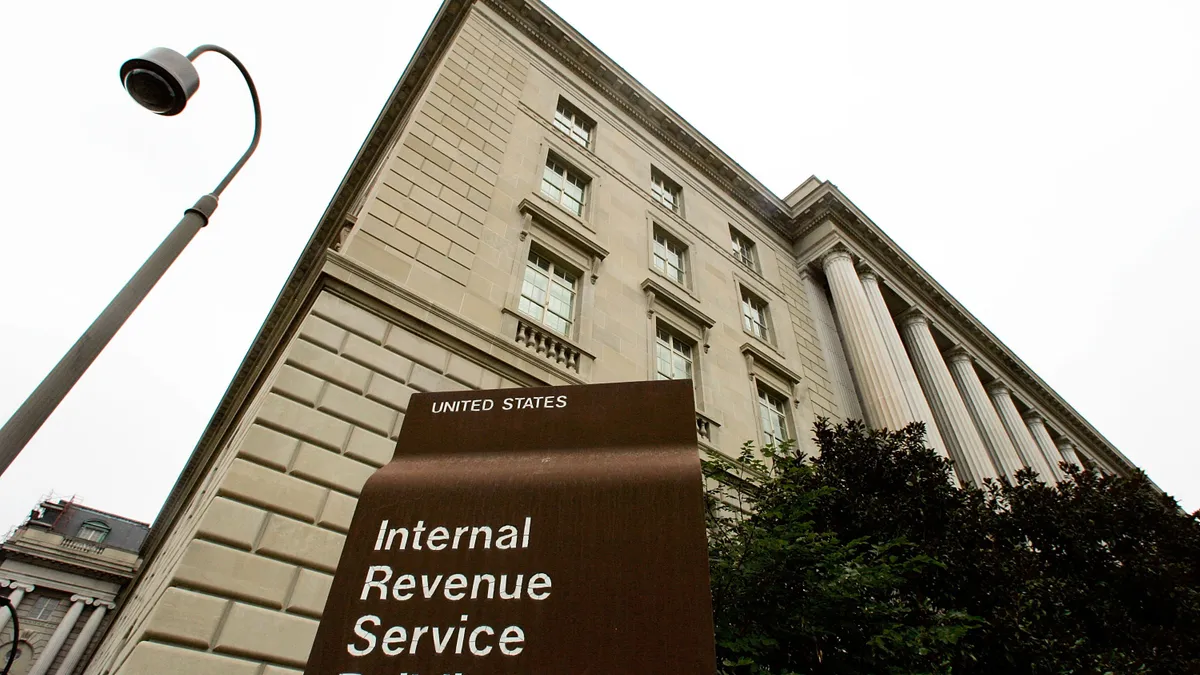Open enrollment can be a headache, but it doesn't have to be. HR Dive's October series on the benefits busy season arms readers with practical advice for surviving and thriving. Stay tuned for parts two and three.
Though it may not have the same cultural connotations as other birthdays, turning 26 is a big deal in the employee benefits space.
While plenty of workers have gone through the enrollment process before that age, it's the cutoff at which many are forced off a parent's plan. And HR has a role to play, guiding first-timers through the process.
"There's a level of apprehension," Jenn Kischell, vice president of voluntary benefit delivery at Metlife, told HR Dive in an interview. "A vast majority of these individuals are going to be either relatively new to the workforce or, likely, younger."
And while these workers may have more choices and more ownership of their benefits options, it's on employers to ensure they have the information and tools needed to make decisions, according to Sushma Tripathi, vice president, strategic advisory services at ADP. HR departments, she told HR Dive in an interview, need to focus on the world in which the employees grew up to improve their experience.
"Employers need to focus not on what they’ve always been doing, but on what they need to change," Tripathi said. Those who grew up with online environments and marketplaces like Amazon have different expectations of what purchasing decisions should be like.
#1: Be proactive about providing accurate information
One piece of the experts' guidance is a familiar standby: provide educational benefits material in a variety of accessible formats well in advance of open enrollment. But execution is a challenge in the age of Slack, Skype and other workplace apps.
"It provides opportunities and presents challenges," Kischell said of these technologies, a particular example of the latter being the accuracy of the information conveyed between employees. Tripathi echoed those concerns, noting that millennials and members of Generation Z often trust online communities and extend this trust to group chats. "If they have a wrong perception of something, they can spread that misperception to others," Tripathi said. "That's bad for your plan."
Kischell recommends employers continue to bring in experts on the organization's plans, whether sourced internally or from the plan carrier, to present the key information. If those same people can hold open hours for employees to ask questions, that's even better.
But fewer and fewer employers hold the traditional sit-down presentation in the run up to open enrollment, Kim Buckey, vice president of client services at benefits services provider DirectPath, told HR Dive in an interview. Instead many rely on call centers or other types of support. For those who do still have in-person points of contact, observation is important.
"If you're noticing people raising hands, post later in your channels," she said. "If everyone's asking about HSAs, clearly we’re not doing a good enough job communicating."
#2: Embrace social media interactions when possible
Buckey's thoughts lead into another point about engaging first-timers, which is that employers shouldn't abandon digital channels entirely.
In fact, one of her favorite recent enrollment experiences was engaging in a Twitter chat on benefits. "It was awesome," Buckey said, noting the range of participants and answers she saw. "I think that's ideal. You get real-time answers to your questions."
This also speaks to the importance of testimonials, which can be especially effective when they aren't solicited by the employer, Kischell said. Metlife also experiments with social ads, having enlisted social media influencers, like mom bloggers, to spread the word about open enrollment.
Focus groups of employees can help HR find the right testimonials, Buckey said, though she believes fewer employers are using focus groups, leaving fewer opportunities. But those in charge of engagement efforts might use other tools, like the employer’s Facebook page or an internal network, to capture the right moments.
Whether it's an Instagram page that only employees have access to or a networking app, giving employees the opportunity to talk to their co-workers about the benefits options that have worked for them is key, Kischell said.
#3: Help workers read between the fine print
There's often a language barrier around benefits, Tripathi said, and sometimes various options can combine to create "a complete alphabet soup." But keeping information in bite-sized chunks, especially in the form of scenarios, can help to personalize and simplify that delivery, she advised.
Within enrollment guides, plan documents and other materials, it's good to put different options side-by-side so employees can make comparisons, Buckey said. Benefits teams should not only emphasize the difference between a premium and a deductible, she added, but also which numbers matter most when choosing plans.
"Most people gravitate toward what they see as the least expensive option based on premiums," Buckey said, "but the least expensive should not be judged on premium … it should be based on what you pay based on coverage."
"That's where they need to clearly understand this is a real choice, and it's not like I can just change my mind tomorrow."

Sushma Tripathi
Vice President, strategic advisory services, ADP
Employees might also need to pay attention to specific elements that directly apply to their situation, Buckey noted. For example, might they be affected if the plan includes a spousal surcharge or a surcharge for tobacco use? Likewise, if there are elements that might otherwise be "hidden benefits," like bonuses for completing health activities such as check-ups, Buckey suggested they be called out.
Most importantly, first-timers need to know that the elections they make likely will stick with them until they have a qualifying life event, Tripathi said. "That's where they need to clearly understand this is a real choice, and it's not like I can just change my mind tomorrow."
#4: Don't forget about fringe benefits
Open enrollment is also a good time to mention other options that those new to an employer's benefit plan aren't aware of, Tripathi said, like student loan repayment or supplemental life insurance.
"More importantly, let them know this is not it," Tripathi said of the open enrollment period. Employees, regardless of tenure, should know that certain benefits are open to them throughout the year.
For example, an employer might tease as part of its programming that the company will highlight breast cancer awareness during one month, or heart health during another, and the benefits it has that could help with disease prevention, Kischell said. "Encourage more people to start those conversations," she added. "We have seen a shift where more and more customers are asking for continuous streams of information."
At the same time, not every employee needs to know about every single benefit, Kischell said. Employers might want to utilize employee resource groups and other forums to focus their messaging.
Editor's note: This story has been updated to include the correct title for Sushma Tripathi.






















